Belgium may be small but it’s packed full of sights. UNESCO-acclaimed sites in the capital city of Brussels range from 14th-century guildhalls surrounding the elegant Grand Place to the early 20th-century Art Nouveau townhouses of Victor Horta. Bruges is a major attraction for tourists, with its perfectly-preserved medieval streets rimming tranquil canals that lure flocks of travelers each year. But plenty of other towns in the country – particularly Ghent and Mechelen – retain excellent architectural examples from the Middle Ages as well. This small nation has been right at the forefront of Europe’s history, with many of the continent’s most important events played out across its countryside. It was in Belgium that Napoleon met his match at the battle of Waterloo, and during both the First and Second World Wars, Belgium found itself thrust into the frontline. The World War I battlefields of Ypres are now important pilgrimage sites that are among the most popular places to visit in Belgium. Whether you’re here for the ancient or modern history, Belgium provides a huge chunk of European heritage within a bite-sized piece of land.
1 Grand Place, Brussels
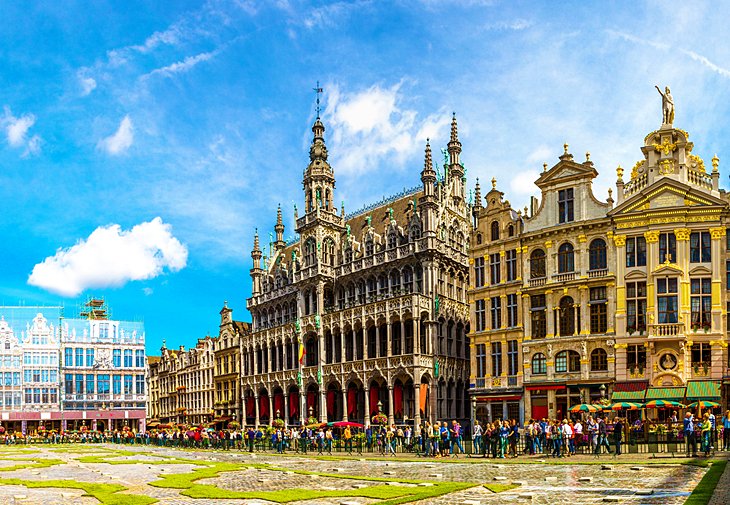
La Grand Place, or De Grote Markt in Dutch, is surrounded by beautiful guildhalls and other buildings dating from the 14th to 17th centuries. One side is dominated by the ornate medieval town hall, a masterpiece of Gothic architecture. Grand Place was named a UNESCO World Heritage Site for its outstanding blend of architectural and artistic styles. The square is busy with tourists and locals at all times of year, but especially in August of alternate years, when the center is filled with the 75- by 24-meter Flower Carpet, made up of more than 700,000 cut begonias. Tip: you’ll get the best full view of the beautiful designs from the balcony of the town hall.
2 The Canals and Belfry of Bruges
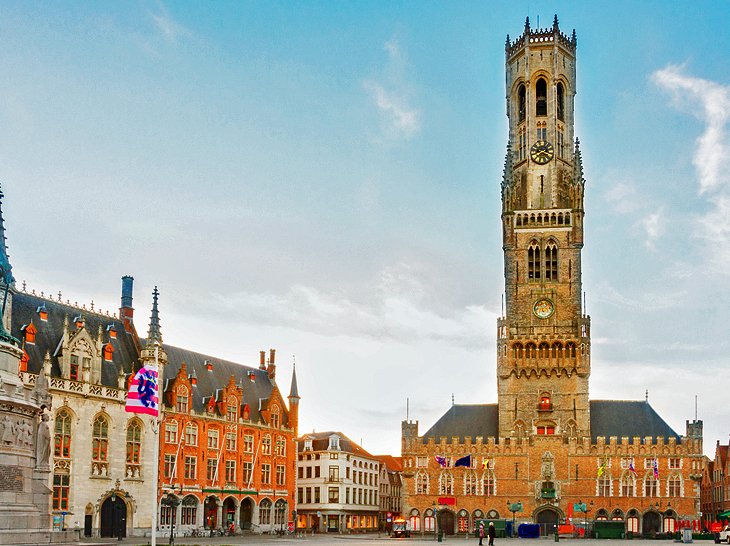
The Canals and Belfry of BrugesShare:
Bruges began on the banks of the river Reie, and as it grew, so did a series of waterways connecting it to the Zwin estuary and the North Sea. Today, the canals are beautiful reminders of Bruges history, and cruising or walking along them is one of the most popular things to do in Belgium. You can download a walking tour map from the tourism website to explore the inner canals, where you’ll find beautiful views of picturesque bridges and glimpse into hidden gardens. Or tour the canals by boat, which you can take from any of five landings.
Among the most recognizable sights in Belgium are the beautiful belfry and Halle, which dominate the main square of Bruges. Dating from the medieval era, this impressive building once functioned as the main town market hall and has been wonderfully preserved, allowing visitors a real taste of the architectural might of the Middle Ages. Climbing the 366 winding and narrow steps of the belfry is one of the favorite things to do in Belgium. Once at the top, the views of church spires and steeple-roofs provide one of the country’s best-known panoramas.
Accommodation: Where to Stay in Bruges
3 The Battlefields of Flanders
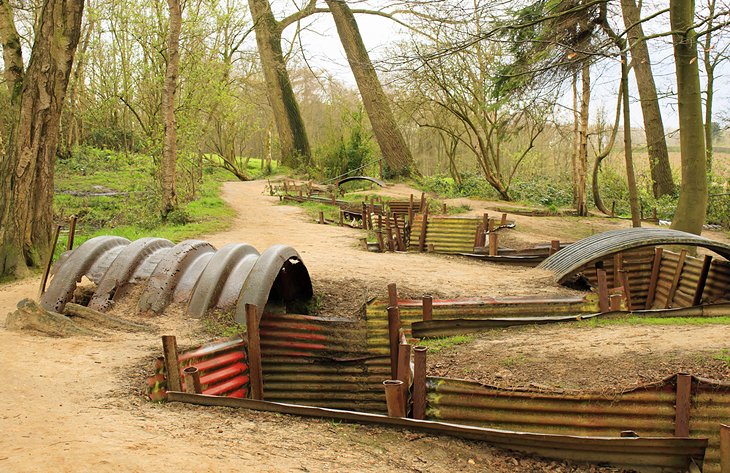
The Battlefields of FlandersShare:
For many visitors, Belgium’s role on the front line of World War I, and in particular the Battlefields of Flanders around Ypres are the main reason for a journey here. Not only important historically, the battlefields are a major pilgrimage site. The preserved trenches run for kilometers around the town of Ypres, while this area is also scattered with vast cemeteries for the thousands of soldiers who died here. The Tyne Cot Cemetery (British) and Langemark’s German War Cemetery are both solemn reminders of the brutal fighting that took place here during the Great War.
4 Ghent’s Gravensteen and Old Town
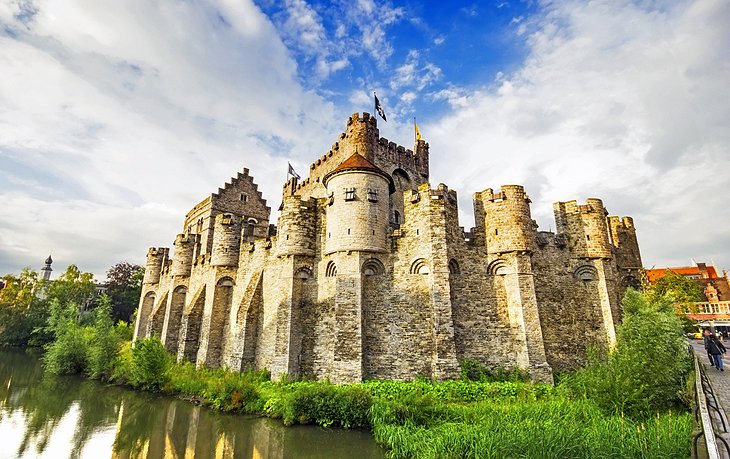
Ghent’s Gravensteen and Old TownShare:
This hugely impressive fort was once the grand home of the counts of Flanders, who took their inspiration for castle-building from the bulky castles the Crusaders built in Syria. Today, Gravensteen is one of Europe’s best surviving examples of a moated fortress and has been incredibly well-preserved. Its strong and impressively thick and high walls soar up from the waters of the river Lieve right in the middle of the old town of Ghent, rising above the rooftops of the surrounding streets. Inside, the vast arched halls and chambers contain exhibits of medieval life, but it’s the castle’s architecture itself that is the real star of the show. Climb up the staircase to the roof for panoramic views across town before strolling through Ghent’s charming stone-paved streets.
Accommodation: Where to Stay in Ghent
5 Horta Museum and Town Houses
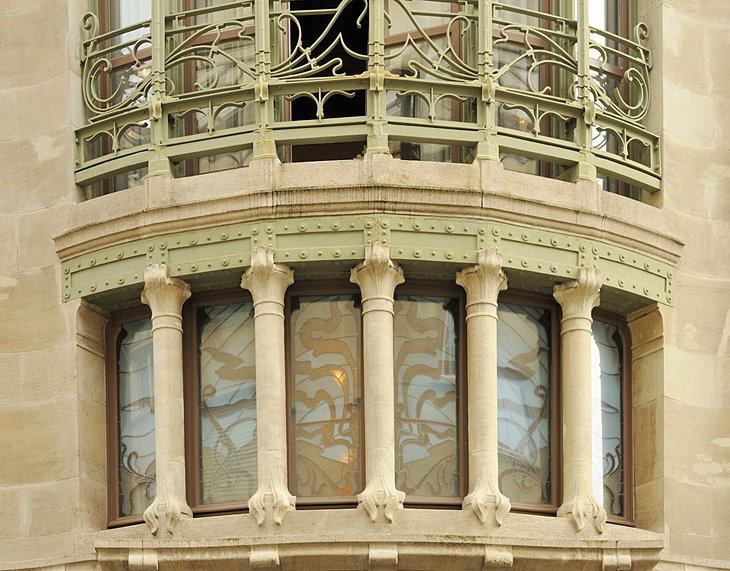
Horta Museum and Town HousesShare:
Victor Horta was the most influential architect and designer of the early 20th-century style known as Art Nouveau. Several of his stunning buildings survive in Brussels and now constitute a UNESCO World Heritage Site. Begin at the Horta Museum, located in his former home and studio, which have been preserved as he designed them, with the original stained glass, mosaics, wood work, and decorations. Horta was a pioneer in this artistic revolution that maximized and diffused natural light and incorporated themes from nature in its sinuous curves. Horta’s aesthetic included attention to every detail of construction and decoration, from the design of the house to its furniture and even the decoration on hinges and doorknobs. The two joined buildings of his house and studio show Art Nouveau at its height, and his four major town houses – Hôtel Tassel, Hôtel Solvay, Hôtel van Eetvelde, and Maison & Atelier Horta – are also included in the UNESCO site.
Address: 23-25 rue Américaine, Saint-Gilles, BrusselsOfficial site: www.hortamuseum.be/en
6 Cathedral of Saint Bavo, Ghent
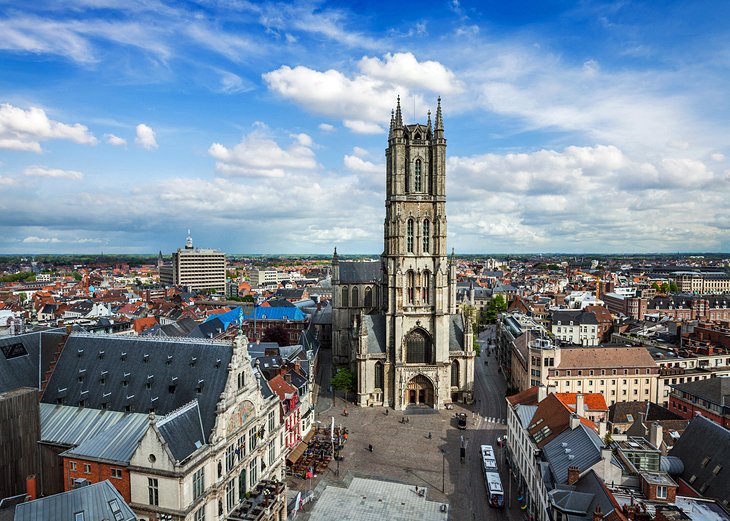
Cathedral of Saint Bavo, GhentShare:
This majestic cathedral with its high Gothic choir and Romanesque crypt showcases the best of religious architecture in Belgium and is Ghent’s most outstanding tourist attraction. Although the soaring building, with its harmonious stained glass windows, is a highlight in itself, most people come here to see the famous artwork that graces the interior; specifically the Flemish masterpiece known as The Altar of Ghent. Once you’ve viewed the painting though, don’t miss the mammoth crypt under the cathedral, which contains important tombs and some beautiful wall paintings.
Accommodation: Where to Stay in Ghent
7 Basilica of the Holy Blood, Bruges
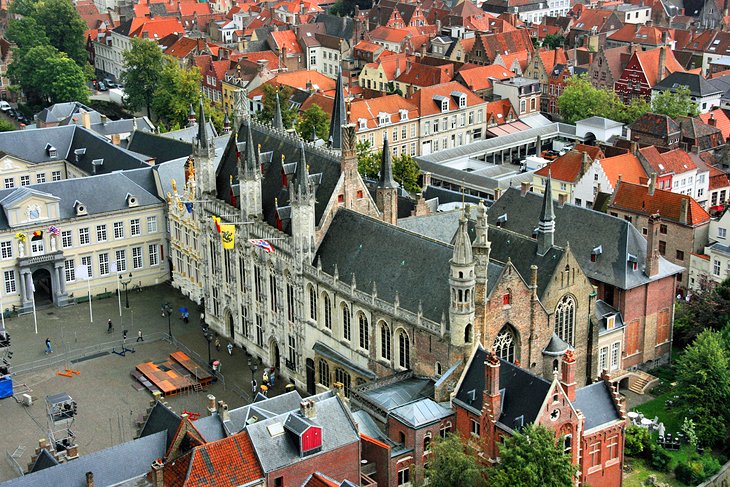
Basilica of the Holy Blood, BrugesShare:
If you’re only going to visit one church in Bruges make it this one. The Basilica of the Holy Blood is not only impressive for its blending of Romanesque and late Gothic architecture but also for the sacred relic kept inside. The upper chapel is home to the famous vial for which the church takes its name; said to contain a drop of Jesus Christ’s blood that was brought back to Belgium after the Second Crusade. The interior of the church is a dazzling riot of gild work that was completed in the 16th century and provides ample reason for a visit even if you’re not interested in holy relics.
Accommodation: Where to Stay in Bruges
8 Grand Place (Grote Markt), Antwerp
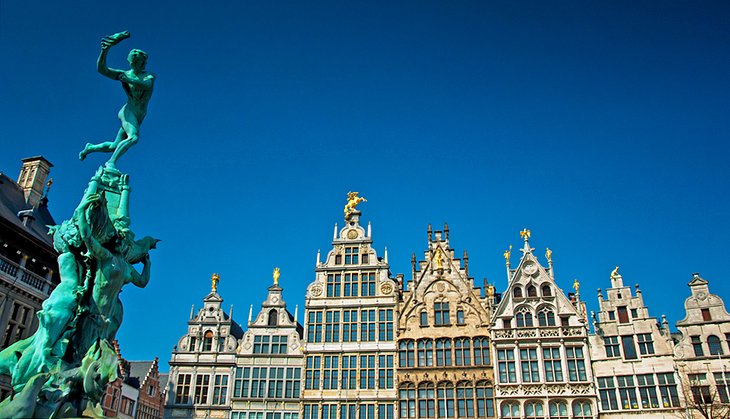
Grand Place (Grote Markt), AntwerpShare:
Right in the core of Antwerp, sits the town’s wonderful Grand Place (also known as the Grote Markt), which contains some of Belgium’s finest examples of guild house architecture with their typical steeple-roofed shape. The Town Hall here is a well-preserved example of 16th-century construction, and the interior is worth viewing for its collection of paintings that show Antwerp’s history. The guild houses that still rim the plaza are the major reason to visit the Grote Markt though. Among the best facades are the Coopers’ House and Grocers’ House, but all of them are well-preserved examples of this Belgian-style of architecture.
Accommodation: Where to Stay in Antwerp
9 Meuse Valley
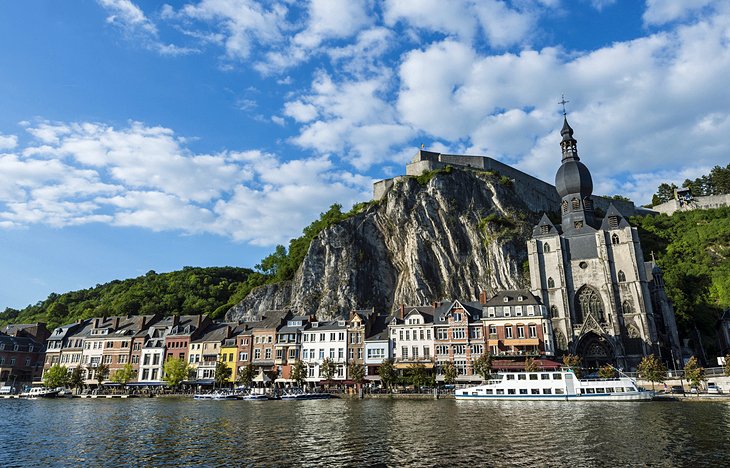
The Meuse Valley, in the south of the country, is one of the best places to get a feel for Belgium’s lush countryside. This is the perfect opportunity to take a trip along the river watching the beautiful scenery unfurl; dense forests are interspersed with cute towns backed by limestone cliffs. In particular, the towns of Namur and Dinant act as a gateway to this region, which has a host of hiking and cycling trails for travelers who want to add some activities into their holiday. Craggy cliff-top citadels and other historic sights add to the attraction, but the real highlight in this area is the scenery itself.
10 Mons Old Town
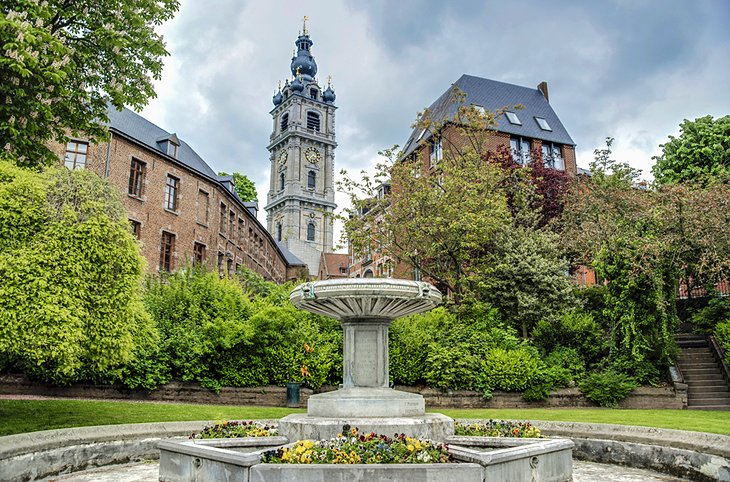
The old town of Mons is a delight to explore. At the center is the Grand Place, a main square graced by a variety of typically ornate buildings that span a 400-year period, dating from between the 15th and 18th centuries, yet still retain a sense of symmetry. In particular, the Toison d’Or House (1615) and the Chapel of St. George (1604) are architectural highpoints. Away from the Grand Place, the old town hides many more sightseeing opportunities. The UNESCO-listed bell tower on the hill above town and the Church of Sainte-Waudru with its interior crammed full of artistic and religious relics are two of the most important attractions.
Accommodation: Where to Stay in Mons
11 St. Peter’s Church, Leuven
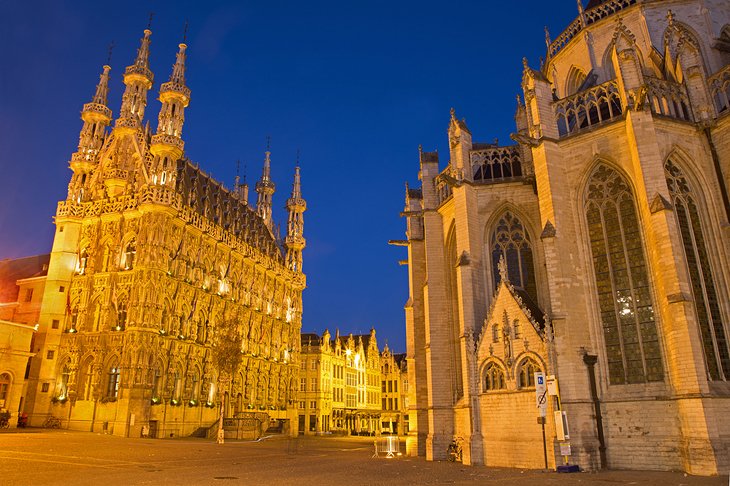
St Peter’s Church and Town HallShare:
St. Peter’s Church sits in the center of Leuven on the town’s main square or Grote Markt. For architecture and history fans, this is one of Belgium’s best preserved examples of the Brabant Gothic style, with its pointed arch windows and sheaf pillars. Inside, art-lovers will find an extra treat. The choir and the ambulatory are home to a museum dedicated to religious art, where some of the finest Flemish paintings illustrating biblical scenes are shown. In particular, the Baroque carved pulpit and Dirk Bouts’ painting of the Last Supper are worth a visit.
Accommodation: Where to Stay in Leuven
12 Mechelen Old Town
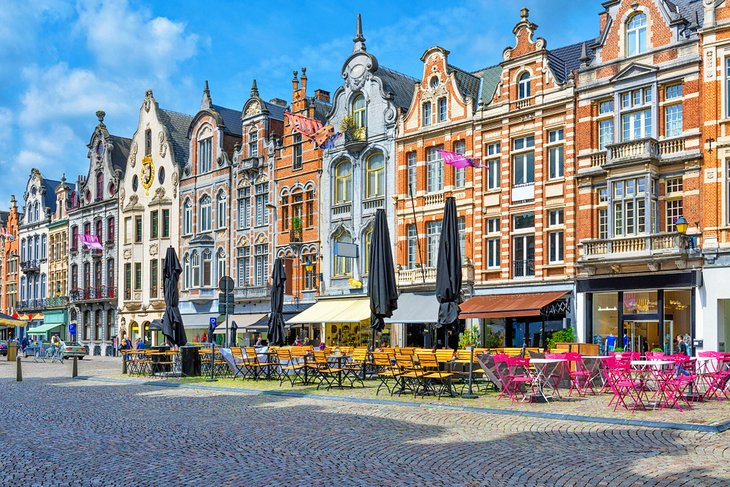
Its monuments may not be as famous as those in Bruges but Mechelen’s old town area is a great place to capture a sense of medieval Belgium with plenty of gabled architecture and fine old buildings still in situ. The central Grote Markt is bordered by some exceptionally fine buildings including the Town Hall and Lakenhall, while the impressive Sint-Rombouts Cathedral with its tall clock tower rises up just behind. Away from the main square, a stroll through the center will also reveal plenty of typical guild house architecture that history fans are sure to want to see.
Accommodation: Where to Stay in Mechelen
13 Waterloo
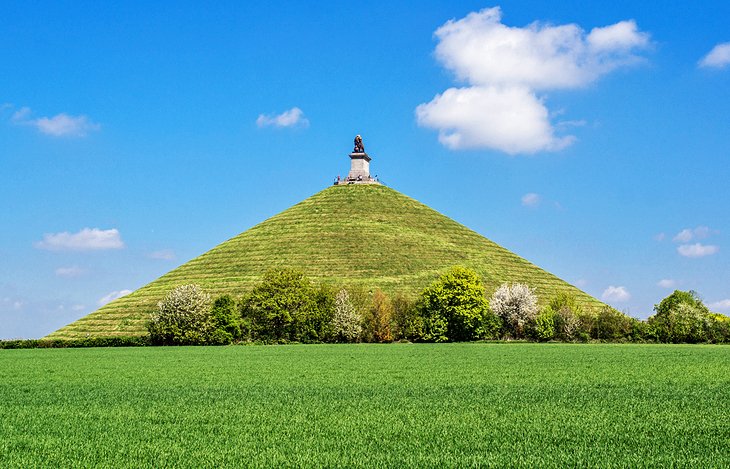
Yes, history fans, it is that Waterloo; the place where Napoleon was defeated in the famous battle. Today, the countryside where the battle once roared is a bucolic landscape of agricultural fields, but an artificial hill rises up from the surrounding flatlands with a memorial lion sculpture atop the summit to commemorate the day when Napoleon’s army was finally stopped. From the top, there are excellent views across the countryside. For anyone interested in the history of Belgium and of greater Europe, Waterloo remains an important stop on the itinerary.
Accommodation: Where to Stay in Waterloo
Belgium looks like a beautiful country. Thank you for the tour!
LikeLike